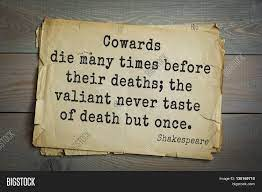William Butler Yeats's Poems
1).Pandemic reading of 'The Second Coming' :
The poem starts like “Turning and turning in the widening gyre/ The falcon cannot hear the falconer”. It seems like there was the gyre of fluish war while 1919 when poem got published. Also it is showing the political violence in Ireland. When we look at his biography then, his wife, George, who was pregnant and caught virus, almost near to death. At that time around seventy percent pregnant women were died. One can see this incident and can say that only at that time Yeats’s wrote this poem. Because it is more hallucinated when one looses loved one, and then he or she writing the emotions and feelings that one may feel by their works.
If we are able to find the pessimism of pandemic in those texts. Generally, it is hard to see. “blood-dimmed tide”, Here we can imagine that this is the most infected imaginary of the poem to prove the pandemic reading. Just floods of blood, in the flu was bleeding from the nose, mouth, ears. Such a horrible visionary one can get by this line. “Ceremony of innocence being drowned”, when it’s his wife and unborn baby who were in the process of drowning like that. “ things are falling apart; the centre cannot hold” talks about the situation of emergency in the time of pandemic or the flu.
If we want
to make another reading of the poem we can do through the apocalypse vision. It
leads towards the ‘ultimate destruction’ as main theme in the poem. In both the
works one cannot find easily the tone of the pandemics. In The Waste Land,
there are so many images portrayed by Thomas Stearns Eliot which can be studied
by another perspectives rather than the pandemic one. Like myths, allusions,
real images, religion centric elements. Though it could happen in the way we
have seen. In The Second Coming , which is written by William Butler Yeats.
There is also we could find the light of pandemic which has thrown by the
poet’s own mind. So these are the symbols of the pandemic to look into both the
poems through pandemic lens.
2) Reread the poem 'War' poem by replacing the word 'war; with 'pandemic'. Does it make any sense?
3) Critical analysis of any other poem written by W B Yeats.
Yeats examine the human attitude to death. And also
compare the human awareness of death and animal’s awareness of death. That humans
are aware that they will die one day and animals are having lack of awareness that
they will die one day too. Poet is saying that animals don’t have fear of death
and also not having the hope of after life. These things humans are always
having.
The lines , “Many times he died, Many times rose again”. By this lines might poet wants to say that, In human life so many times we died when we fail to live, when we feel dead, when we feel useless and so many other ways, But we always get another chance to move on or get good lives.
Further, the poet jump to “A Great Man”. Where he tried
to talk about the idea that when we breathe our last breath on this earth, do
we replace any kind of existence with another? What happens to us when we die? Yeats also said that death is the man maid
concept “ Man has created death”- here he is saying that animals also die like
men are dying. But animal’s lives are not having these questions that what
happens when it shuffles off this mortal coil, what may await after the last breath.
4) Apply concepts of Indian Poetics and re-read both the poems.
When we go with the another poem is “On Being Asked for a War Poem”. We can see the very use of irony in whole poem. The poem has Rasa like ‘Adbhutam’(wonder, amazement).’Auchitya’ is also found in the poem. Poet has used Vakrokti in very intelligent way in all the lines of poem.
THANK YOU !


No comments:
Post a Comment